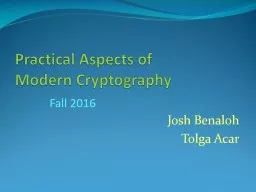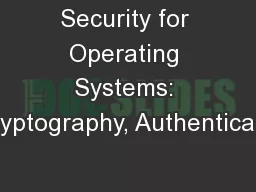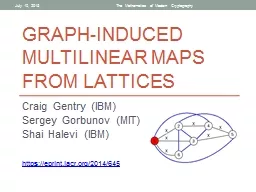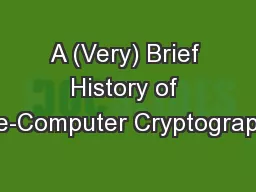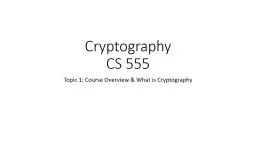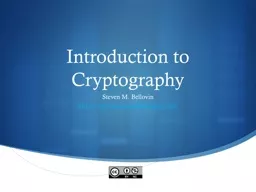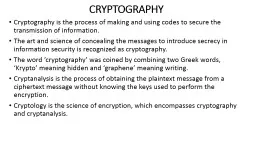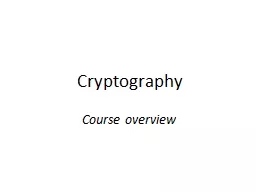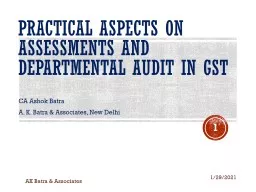PPT-Practical Aspects of Modern Cryptography
Author : liane-varnes | Published Date : 2017-04-06
Josh Benaloh Tolga Acar Fall 2016 October 25 2016 2 The wiretap channel Key K 1 Key K 2 Eavesdropper Plaintext P Noisy insecure channel Encrypt Decrypt Alice Bob
Presentation Embed Code
Download Presentation
Download Presentation The PPT/PDF document "Practical Aspects of Modern Crypt..." is the property of its rightful owner. Permission is granted to download and print the materials on this website for personal, non-commercial use only, and to display it on your personal computer provided you do not modify the materials and that you retain all copyright notices contained in the materials. By downloading content from our website, you accept the terms of this agreement.
Practical Aspects of Modern Cryptography: Transcript
Download Rules Of Document
"Practical Aspects of Modern Cryptography"The content belongs to its owner. You may download and print it for personal use, without modification, and keep all copyright notices. By downloading, you agree to these terms.
Related Documents

